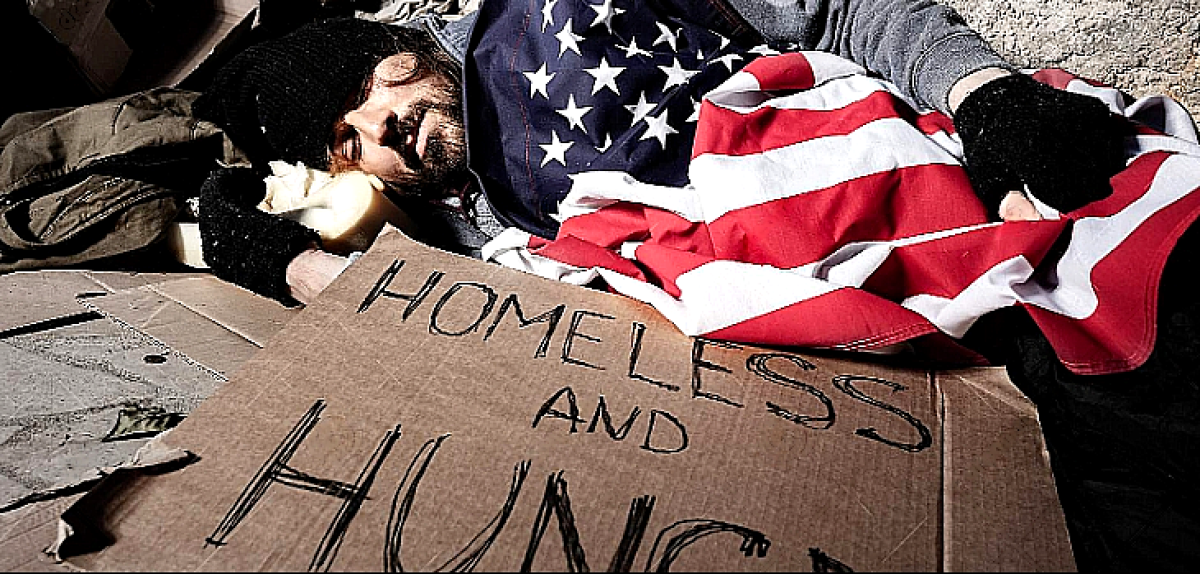 176
176
Despite the ostentatious display of “power and affluence,” the United States is wracked by extreme poverty and hunger. The number of indigent and malnourished individuals is increasing daily.
Today’s America seems to be quite different from what was once referred to as the “American dream” and the “land of opportunities.”
Nonetheless, the US is still the richest country in the world and the growth rate of the country’s GDP is higher than the average of all member countries of the Organisation for Economic Co-operation and Development (OECD) and Group7. Therefore, not only should there be widespread poverty in such a society, but naturally, people should enjoy economic prosperity and have equal prospects for financial advancement.
Yet official statistics suggest the contrary. Human rights violations are pervasive, and there is a dramatic increase in the number of homeless and destitute citizens.
The Gini coefficient, as an index for measuring inequality, has risen significantly over the last decade, both in countries with high incomes and in developing countries. Meanwhile, it is the United States that has assumed the title of the most unequal country in the world.
This appalling inequality illustrates the widening economic disparity between the wealthy and the poor classes. At the same time, fewer and fewer Americans are considered to belong to the middle-class.
From 1971 to 2019, the number of middle-class people in the US dropped from 61% to 51%. During these years, the income of a large number of middle-class American families has plummeted, resulting in escalating poverty rates, the gradual disintegration of the middle-class, and subsequent food insecurity.
According to experts, one of the most salient ramifications of the economic downturn in American society is food insecurity, an urgent challenge that is difficult to address.
In this regard, Fox News recently broadcast a report exposing that, as a result of the record spike in the inflation rate, food banks throughout the United States have confronted challenges due to record-breaking demand for charitable food among hungry Americans.
According to the US Department of Labor, food costs have risen by 10.4%, which puts further strain on food banks. Prior to the COVID-19 pandemic, food pantries could stock their shelves with the same amount of food for redistribution across the United States for 40% less than they do nowadays.
Among diverse socioeconomic and demographic groups in the United States, children are the most susceptible to the detrimental effects of hunger and food insecurity.
Recent studies demonstrate that the number of American children living below the poverty line has climbed considerably since the end of last year, when Biden’s child tax credit payments expired.
Moreover, children of colour and of Latino descent suffered more than their white peers.
Also, the findings demonstrate that Native Americans face a myriad of financial constraints. Widespread poverty, hunger, and food insecurity are only some of these social injustices.
According to the non-profit organisation, “Feeding America,” a decades-long history of disastrous, racist, and systematic discrimination in federal policies has resulted in a high proportion of poverty and a high percentage of food insecurity among American Native communities.
Furthermore, one-third of Native Americans are living below the poverty line due to low wages and uncertain employment prospects, as reported by the “American Community Survey” (ACS).
Poverty compounds the sociocultural crisis in America.
Poverty has not only exacerbated economic difficulties for American households but has also had far-reaching social and cultural implications, with many women turning to prostitution to make ends meet.
This imbroglio is particularly common among ethnic minorities who face lamentable prejudice, a dilemma that may be the catalyst for the emergence of contagious health predicaments among those in low-income communities.
Another issue that has plagued American culture is the sharp rise in the number of robberies. The New York Police Department (NYPD) just published a report revealing that violence has grown since 2021. This includes an increase of 46.7% in common burglaries, a rise of 54.0% in major thefts, and the rate of sexual assault is up by 14.9%.
Healthcare in the United States.
Healthcare in the United States lags far behind that of other capitalist nations.
This deplorable state of affairs is largely attributable to the widening social divide in the United States. Millions of Americans today do not have access to physicians or medical treatments since they do not have health insurance.
American Senator Bernie Sanders recently crticisesd US social inequalities in a tweet, pointing out that 140 million Americans are considered low-income and 92 million cannot afford medical care. The same data suggests that 50 million Americans are struggling to put food on the table, and another 4 million are at risk of becoming homeless.
Comment
Post a comment for this article